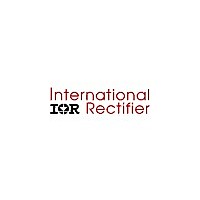IRPLLED1A International Rectifier, IRPLLED1A Datasheet - Page 24

IRPLLED1A
Manufacturer Part Number
IRPLLED1A
Description
Power Management IC Development Tools Hi-Vlt DC-DC Buck Cnvr HBLED Cur Cntrl
Manufacturer
International Rectifier
Type
DC/DC Converters, Regulators & Controllersr
Datasheet
1.IRPLLED1A.pdf
(28 pages)
Specifications of IRPLLED1A
Product
Power Management Development Tools
Tool Is For Evaluation Of
IRS25401PBF
Output Voltage
16 V to 24 V
Output Current
350 mA to 1.5 A
Factory Pack Quantity
1
The yellow waveform shows the output voltage and the red waveform shows the VS switching waveform. In this
example there is no output capacitor. When the output goes above the over voltage threshold the VCC voltage
shown in blue is quickly pulled below VCCUV- and then gradually charges back up to VCCUV+ through RS1. If an
output capacitor is connected then VCC is pulled almost to zero by IC3 and the systems takes longer to re-start.
The values of the divider resistor ROV1 and ROV2 are calculated as follows:
Let ROV2 = 10K
Filtering
The RC filter at the IFB pin is used to remove high frequency transients associated with the switching. The corner
frequency of this filter was left high enough to prevent any further distortion of the feedback signal.
The input filter is a low-pass filter. Its main objective is to prevent ringing of comparable frequency on Vbus. Exact
values of capacitance and inductance are not of critical importance, so long as adequate filtering is accomplished. In
addition to the electrolytic capacitor that is used for filtering on the bus there is also a small ceramic for decoupling
of high frequency noise. Ceramic capacitors typically have low ESR such that they are more ideal for high
frequency filtering.
The IRS25401/11 was specifically designed to handle low frequency ripples on VBUS. Its capability to handle such
ripple makes it ideal for an offline rectified waveform. However if high voltage (on the order of 5V-10V) high
frequency oscillations (greater than or close to the operating frequency) are present on VBUS, it is recommended to
implement an input filter. If these high frequency signals are present on VBUS the IRS25401/11 will still continue
to regulate the current through the load, however abnormal switching of LO and HO may be observed. This poses a
problem in terms of switching losses. As previously discussed, the application may need to control the operating
frequency to optimize the system efficiency. Excessive high frequency ripple at the DC bus could cause the
frequency to become unstable, since this system relies on a self-oscillating principle and is sensitive to noise.
Careful attention to the PCB layout is also necessary for this system to operate correctly. If filters on IFB and VCC
are not placed correctly, high frequency ripple will couple to the IFB input and interfere with the operation of the
control loop. Also if the load current is 1A or 1.5A, when HO turns on the load immediately tries to draw this
current. Since the circuit supply is not usually close by, the capacitance of the input wire is not enough to
compensate for this large pull of current and this can result in oscillations or change in potential on the input line.
www.irf.com
V
R
R
out
OV
OV
10. Other Design Considerations
1
1
=
=
≈
2
120
V
5 .
out
⋅
2
(
k
R
5 .
R
Ω
OV
OV
2
R
1
−
+
OV
R
R
2
OV
OV
2
2
)
=
32
V
2
⋅
5 .
10
k
Ω
V
out
−
RD-0608
10
=
k
2
Ω
5 .
=
⋅
(
118
R
OV
k
R
1
Ω
+
OV
R
2
OV
2
)
24









